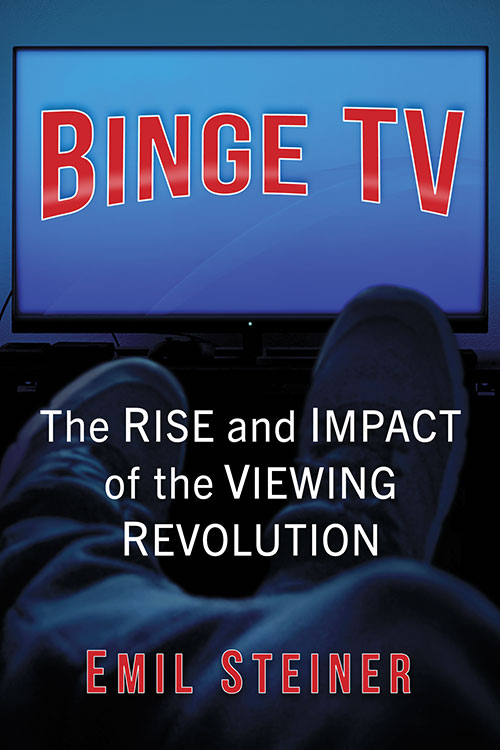Binge TV
The Rise and Impact of the Viewing Revolution
$39.95
In stock
About the Book
For the first 70 years of television, broadcasters dictated the terms of the viewing experience, deciding not only when but how much of a program an audience could watch. Binge-watching destroyed that model by placing control of the experience in the hands of the viewer.
In this book, media scholar Emil Steiner chronicles the technological and cultural struggle between broadcasters and viewers, which reached a climax in the early 2010s with the emergence of streaming video platforms. Through extensive interviews and archival research, this groundbreaking project traces the history of binge-watching from its idiot box roots to the new normal of Peak TV. Along the way, Steiner exposes the news campaigns waged by disruptive technology companies that exploited a long-simmering, revolutionary narrative of viewer empowerment to take over the broadcast industry. Binge-watching, an individual’s act of gaining control and losing control through the remote control, exposed a debate that had been raging since the first TV set was turned on—one that asks, “Who controls the story?”
About the Author(s)
Bibliographic Details
Emil Steiner
Format: softcover (6 x 9)
Pages: 245
Bibliographic Info: 20 photos, notes, bibliography, index
Copyright Date: 2023
pISBN: 978-1-4766-8407-9
eISBN: 978-1-4766-4749-4
Imprint: McFarland
Table of Contents
Preface 1
1. Turning on the Idiot Box 3
2. From Roots to Stem 18
3. High-Definition Control 62
4. From Couch Potato to Binge-Viewer 101
5. Rituals and Motives of Binge-Viewers in Action 137
6. Reflection and Postmortem of the Idiot Box and the Couch Potato 169
Epilogue 193
Chapter Notes 197
References 215
Index 235
Book Reviews & Awards
• “Steiner exceeds his goal of making scholarly writing more accessible to all. That’s no small feat… The book’s chapter notes and bibliography are especially useful for researchers who are working to connect the past and present. Readers will also appreciate the book’s ‘commercial breaks,’ designed in the form of inset boxes that point to related topics throughout the text. … An accessible and essential read for TV enthusiasts who enjoy reading about the history of the medium as much as they do watching it.”—Library Journal
• “An outstanding cultural, social, and technical history of television and its viewing practices.”—Lothar Mikos, professor of television studies, The Konrad Wolf Film University of Babelsberg, Germany





